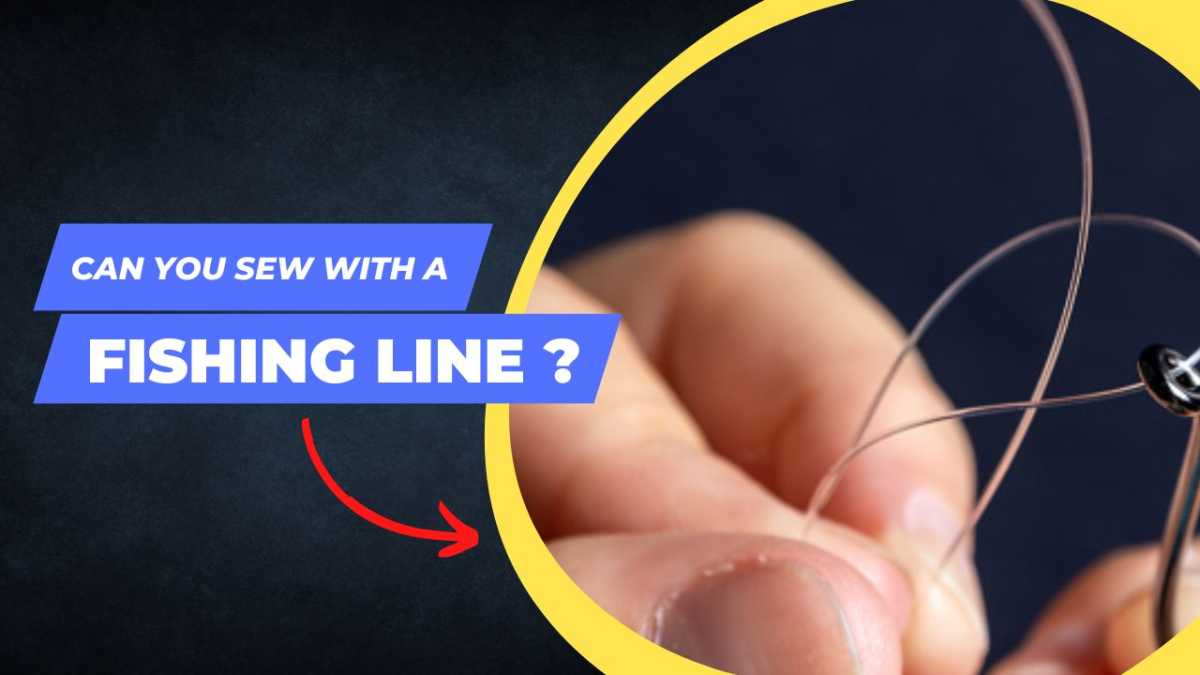Can you sew with fishing line ? Yes you can ! You may be surprised to learn that you can in fact sew with fishing line! There is a type of fishing line called monofilament that is frequently used in the clothing industry
Monofilament thread is a type of fishing line that is often used in the clothing industry. It is clear and can be used to sew atheletic clothing or to attach labels.
Monofilament thread can easily fit through a sewing machine needle, which fishing line might not be able to do. However, monofilament thread can be scratchy where it come in contact with the skin.
The Pros of Sewing with Monofilament Thread

Monofilament is a type of fishing line that is often used for sewing. It is made from a single strand of material, and it is very strong and durable. monofilament can be used for a variety of sewing projects, including mending clothes, hemming fabrics, and even stitching together quilts.
While it is not the easiest type of thread to work with, monofilament is very strong and can handle a lot of wear and tear. With a little practice, monofilament can be a great choice for any sewing project.
The Cons of Sewing with Monofilament Thread
Despite its benefits, there are also some drawbacks to using monofilament thread. First, monofilament thread can be scratchy and irritating where it come in contact with the skin.
Second, monofilament thread is not always available in every color, so if you are looking for a specific color, you might have to source it from a specialty store. Finally, monofilaments thread can be more expensive than other types of threads on the market.
Can you sew with a Fishing line ?

The answer, it turns out, is yes—you can sew with a fishing line! While it’s not the ideal material for every sewing project, fishing line can be used in a pinch. It’s strong and sturdy, so it’s great for projects that require durability, like outdoor gear or upholstery. And because it’s clear, it can be used for projects where invisible stitches are desired, like in heirloom quilting or applique work.
Of course, there are some caveats. Fishing line is thinner than most sewing threads, so it can be difficult to work with if you’re not used to it. And because it’s designed to be strong and sturdy, it can be tricky to thread through a needle especially if the eye of the needle is small.
Lastly, because it’s typically made from nylon or polyester, it doesn’t always respond well to heat; so if you’re using fishing line for a project that will be exposed to sunlight or high temperatures, be sure to test a sample first to see how it will hold up.
Things to keep in Mind When Sewing with Fishing Line !
The first thing to consider is the type of fishing line you’ll be using. Thick, braided lines work best for sewing because they’re strong and less likely to break. However, these lines can be difficult to work with if you’re not used to them. In general, it’s best to start with a thinner line and work your way up as you get more comfortable.
Another important thing to keep in mind is that you’ll need a very sharp needle to sew with fishing line. Because the line is so thin, regular sewing needles will likely bend or break before piercing the fabric. There are special needles designed for sewing with fishing line, so be sure to purchase one of these before starting your project.
Finally, take your time and go slowly when sewing with fishing line. It can be easy to make mistakes since the line is so thin and hard to see. But if you take your time and focus on each stitch, you’ll be able to produce professional-looking results.
Sewing with fishing line may seem daunting at first, but it’s actually quite simple once you get the hang of it. Just be sure to use a thick, braided fishing line and a sharp needle designed for sewing with this type of material. And don’t forget to take your time rushing will only lead to mistakes.
